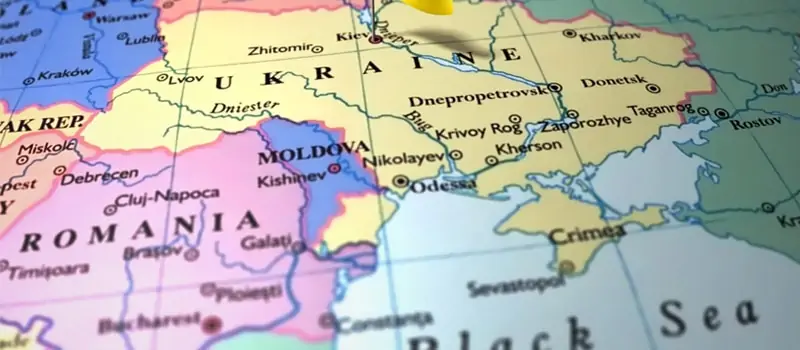Genealogical DNA tests can help you locate your ancestors, but it isn’t always easy to understand the ethnicity labels they use. Sometimes it’s clear, such as a single country. Just as often, though, it’s a region, such as Eastern Europe. And regions are harder to define.
So, what is Eastern European ancestry? From a cultural standpoint, Eastern Europe has been very stable compared to other regions. Several groups have invaded the region over the centuries, but as often as not the invaders adopted Slavic customs rather than the other way around. However, the invaders also brought their genes with them, and that can make it harder to decide just how Eastern European your DNA really is.
Eastern Europe today
What do we mean by Eastern Europe? It depends on who you ask, but generally everything north of Greece, south of the Baltic Sea, and east of Germany falls into the region. One of the biggest questions is how far east the region goes. Most people include Belarus, the Ukraine, and the western-most parts of Russia. In some cases, it may stretch as far east as the Ural Mountains.
Eastern Europe is typically considered to include:
- Poland
- The Czech Republic
- Slovakia
- Hungary
- The Baltic states: Latvia, Lithuania, and Estonia
- The Balkans: Albania, Bosnia and Herzegovina, Bulgaria, Croatia, Kosovo, Montenegro, North Macedonia, Romania, Serbia, Slovenia
- Belarus
- Ukraine
- Moldova
- Western Russia
Austria is often included in Eastern Europe, but may show up as Western Europe ethnicity on some DNA tests, especially in families with a stronger Germanic heritage. See my guide to Germanic Europe ancestry.
Eastern Europe of the past
The Baltic and Slavic peoples have lived in Eastern Europe for well over two thousand years. Normally, this is exactly what makes a group easy to classify when it comes to genetic ethnicity. But as we’ll see, many other groups pushed into the area and brought their DNA with them.
In addition to the Baltics and the Slavs, a few groups lived in the southern part of the region, namely the Celts, Thracians, and Illyrians. Many of the Celts pushed their way westward into modern-day Germany, France, and the British Isles, while the Thracians and Illyrians largely vanished from history.
The rise and fall of Roman influence
Shortly after the death of Julius Caesar in 44 B.C., the Romans began pushing their way into Eastern Europe and conquered most of the Balkans. Despite many years of fighting, Rome’s control of the area north of the Danube River remained relatively weak.
By the mid-5th century A.D., Rome’s power was in decline and threatened by a new and powerful enemy, the Huns. They arose in the central Asian Caucuses, near the Volga River, and pushed their way west. They drove the Romans south of the Danube, and fought their way west to the Alps, even invading Italy for a brief time. Soon after the death of Attila, their threat waned, and they were absorbed into the local populations.
By 500 A.D. Rome’s remaining power in the Balkans collapsed. The eastern portions of the region, Bulgaria and Romania, remained under the influence of that portion of the Roman Empire that became known as the Byzantine Empire.
In the 7th century, more invaders from Central Asia arrived in the form of the Bulgars and Avars. The pushed their way into the Byzantine areas in the southern Balkans. Much like the Huns before them, they succeeded in conquering a large area of land. Also like the Huns, they failed to replace the existing cultures and languages, which remained dominant – in effect, the intruders were absorbed by the people who were already there.
Hungary established
A Uralic tribe called the Magyar, who originated on the northern Asian steppe, arrived in the Carpathian Basin around the year 900 A.D. There, they established a kingdom that was to become Hungary. Unlike other groups, however, they did not adopt the local language and customs of the Slavs. Instead they retained their own unique identity, including a language closely related to Estonian and Finnish.
The Russians
Around the same time that the Magyar were settling Hungary, several Slavic tribes united into a confederation known as the Rus’. They created a kingdom that covered present day Ukraine, Belarus, and western Russia, with their capital at Kiev. Despite later invasions, they retained their cultural heritage, and the countries of Russia and Belarus continue the name of that confederation even today.
Mongolian invasion
One of the greatest threats was the invasion of the Mongols, led by two of Genghis Khan’s grandsons. The Medieval Europeans were no match in battle for the lightning-quick raids by the mounted archers of the Mongols.
The horde tore its way through Russia, Belarus, and Ukraine before continuing west. The Mongols invaded many of the Eastern European kingdoms of the time, including Poland, Bohemia, Moravia, Silesia, Hungary, Croatia, and Bulgaria, and even eastern Germany and Austria. In some places, nearly half of the local population was killed, and refugees fled in every direction.
Though decisive in battle, the Mongol invasion lasted only a few years. They were content to return to their homelands with the spoils of war and promises of tribute from the kingdoms they defeated.
The Ottoman Empire
Not long after the Mongol invasion, the Ottoman Empire pushed its way westward out of Turkey and into Eastern Europe. They managed to conquer the Serbian Empire and Bulgaria, but were stopped by fierce resistance in Hungary and Wallachia (present day Romania).
Centuries of stability
Things finally settled down in Eastern Europe by around 1500 A.D. The Balkans spent the next 300 years under Ottoman rule. Austria and Hungary united to create the Austro-Hungarian Empire, which remained intact until World War I. Lithuania and Poland formed a commonwealth, and the Russian Empire was established.
During this time, peaceful migrations took place. Most notably, many Jews driven out of the Middle East and other parts of Europe settled in Eastern Europe. By one estimate, there were 750,000 Jews living in the Polish-Lithuanian Commonwealth by the middle of the 18th century.
Putting it all in genealogical terms
The long presence of the Slavic and Baltic peoples in Eastern Europe makes that region distinct when it comes to DNA. If you have traced your ancestors to Eastern Europe, you can expect that to show up on your DNA profile. But what if you didn’t get the results you expected?
If you got a lower percentage of Eastern European DNA than you expected, it might be due to:
- Southern European ancestors, especially in the Balkans;
- Central Asian ancestors in the form of Huns and Mongols;
- Middle Eastern ancestors from the Ottoman Empire, mainly in the Balkans;
- Western European ancestors from German and French attacks into the region over the centuries (Napoleon’s army made it all the way to Russia);
- Jewish ancestors who settled in the region and may show up as Jewish Ashkenazi on your DNA profile.
If you receive a higher percentage of Eastern European DNA than you expected, keep in mind how often the region was invaded. During the Mongolian attack in particular, many people fled the region, and never returned. Instead they settled in Western and Southern Europe. More recently, the First and Second World Wars led to major upheaval and emigration.
Are your ancestors from Eastern Europe?
Genealogical DNA testing is constantly improving. As more people get tested, regions become more precise. But your ethnicity estimate is still only an educated guess. Use it as a starting place to discover more.
A genealogical DNA test from companies such as Ancestry DNA and FamilyTreeDNA can provide you with an overview of your family origins. Your ethnicity report gives you insights into where your family came from, where to focus your research, and helps you break down brick walls.



